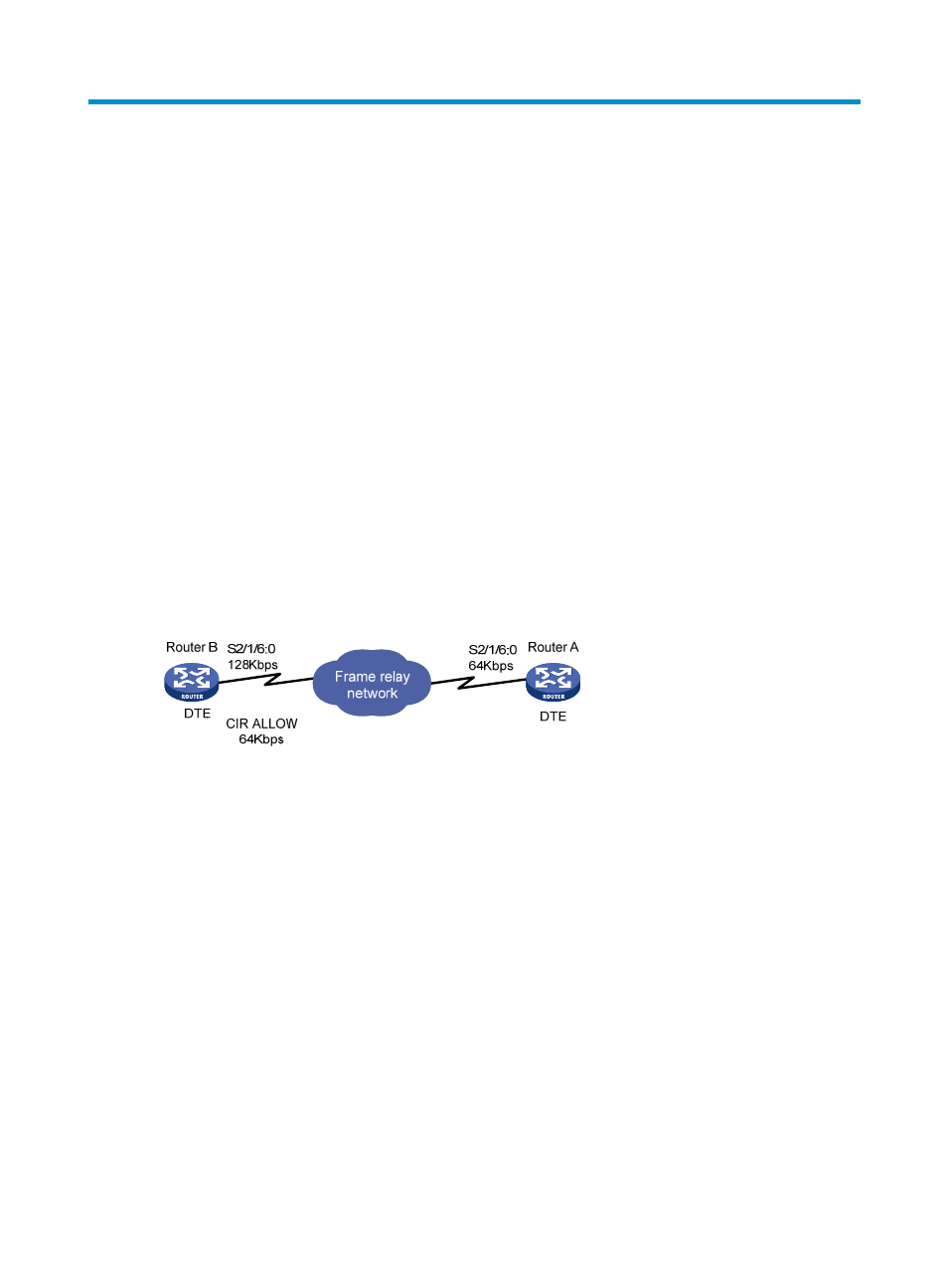Configuring fr qos, Overview, Why frts – H3C Technologies H3C SR8800 User Manual
Page 75: How frts works

66
Configuring FR QoS
Overview
FR QoS allows you to deploy QoS (frame relay traffic shaping) on each PVC of an FR interface. By
configuring Committed Information Rate Allowed (CIR ALLOW), which is the transmitting rate an FR
network allows, you can guarantee CIR ALLOW for user data transmission when no congestion occurs in
the network.
Why FRTS
Frame Relay Traffic Shaping (FRTS) limits traffic of packets and bursty packets sent from a PVC, so that
these packets can be transmitted at relatively even rate.
In an FR network, the bottleneck often occurs at the network segment juncture if the bandwidth of different
segments does not match. As shown in
, Router B transmits packets to Router A at the rate of 128
kbps whereas the maximum interface rate of Router A is only 64 kbps. Then, bottleneck occurs at the
place where Router A is connected to the FR network, and results in congestion that interrupts normal
data transmission. With FRTS applied on the outgoing interface Serial2/1/6:0 of Router B, the interface
can transmit packets at a relatively even rate of 64 kbps, and the network congestion is avoided.
Figure 22 FRTS implementation
FRTS is applied on the outgoing interfaces of the router. It allows you to configure the CIR ALLOW
parameter. FR PVCs can transmit packets at the rate of CIR ALLOW when the network is normal.
How FRTS works
FRTS is implemented using token buckets. The meanings of the related parameters in the protocol are
modified as required by the actual algorithm and principles. For how a token bucket works, see
.
